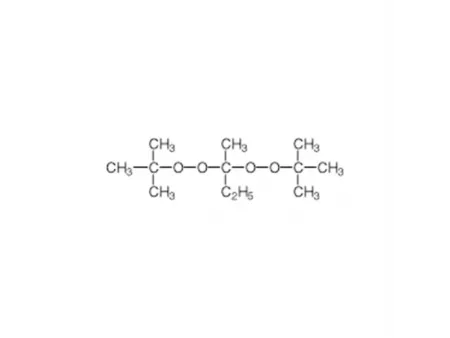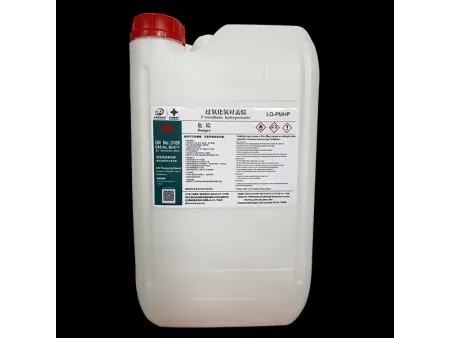2,2-Di(tert-butylperoxy)butane (DBPB)
- Chemical Family Organic Peroxide
- Molecular Formula C₁₂H₂₆O₄
- Molecular Weight 234.3
- EINECS 218-507-2
- UN No. 3103
- Road Transport (ADR) 5.2
- Rail Transport (RID) 5.2
- Sea Transport (IMDG) 5.2
Half-Life Period
(measured in chlorobenzene solution)
- 0.1 hour 136℃
- 1 hour 116℃
- 10 hours 98℃
- Appearance: Colorless clear liquid
- Solubility: Insoluble in water, soluble in most organic solvents
- Concentration: 50.0 ±1.0%
- Tert-butyl hydrogen peroxide content: ≤0.3%
- Chromaticity: 20Pt-Co max
- Density: 805kg/m³ (20℃)
- Viscosity: 2mPa.s (20°C)
- Theoretical active oxygen content: 13.66%
- Major decomposition products: methane, ethane, acetone, 2-methoxy-2-methylpropane, tert-butyl alcohol, carbon dioxide
- Activation energy: 154.08 kJ/mole
- Self-accelerating decomposition temperature (SADT): 70℃
- Hazardous temperature (Tem): 65℃
- Storage temperature (Ts max): 30℃
DBPB is primarily used in the polymerization of styrene and styrene copolymers via suspension methods, within a temperature range of 90°C to 130°C. It can be blended with isododecane, ethylbenzene, or mineral oil, depending on specific customer requirements. Compared to thermal polymerization, DBPB offers several advantages, including lower residual monomer levels, higher conversion rates, and faster reaction speeds.
-
Packaging
DBPB is typically packaged in 20 kg polyethylene drums. Custom packaging sizes can also be provided upon request.
-
Validity
When stored under the manufacturer’s recommended conditions, the product retains its quality for up to three months.
-
Storage
DBPB should be stored within the temperature guidelines provided by the manufacturer. Exceeding the critical storage temperature can lead to fire hazards.
The storage area should be kept free from open flames, heat sources, and static electricity, with proper ventilation and protection from light.
For large quantities, it is recommended to use a dedicated storage facility. The product should be kept away from reducing agents, rust, dust, heavy metal ions, acids, and bases.
Handle with care to avoid impact and friction.



